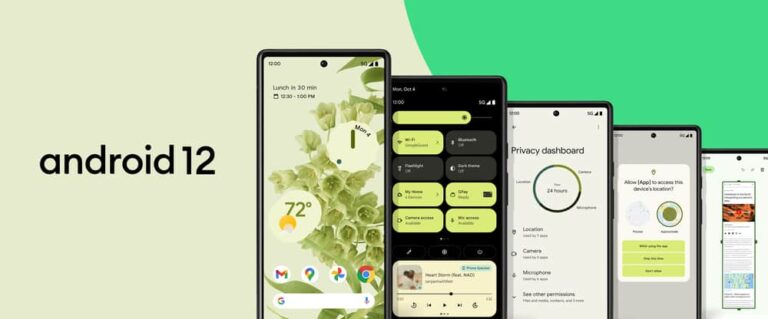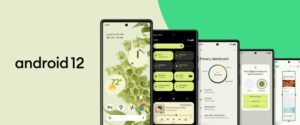Android is the world’s most notable smartphone operating system, running on the north of three billion smartphones. Accordingly, even the smallest of changes in the OS can possibly influence a great many users. But because of the way wherein Android updates are delivered. It’s easy to refute changes whether these progressions truly have a difference. Disregarding that, we’re persistently anticipating the following huge Android update with the assumption that it brings significant change. Talking about which, Android 12 is presently official in its stable form beginning with the Pixel 6 and Pixel 6 Pro. Here’s each and everything we are familiar with Android 12.
What we will see here?
Android 12 release date
Android 12 was accounted for at Google IO 2021 and is was dispatched on the Android Open Source Project (AOSP) on October 4. Not long after the Google Pixel 6 launched on October 19, Android 12 opened up for older Pixel phones.
Then, at that point, devices from Samsung, OnePlus, Oppo, Realme, Tecno, Vivo, and Xiaomi are set to get Android 12 later this year.
It will be up to device makers to convey Android 12 to your phone. Nonetheless, and that consistently requires quite a while to do, so don’t be astounded if your specific handset can’t update to Android 12 until 2022.
Meanwhile, the new software is out in beta for select devices presently, including phones from Oppo, Nokia, OnePlus, Xiaomi, ZTE, Asus, TCL, and iQOO – just as a lot of Pixel devices.

Pros
- Material You provides a reviving and beautiful change
- More straightforwardness over information use
- New animations cause the system to feel more responsive
Cons
- Confusing charts in battery and protection dashboards
- Sound coupled haptic feedback actually missing
- An excessive amount of variation across the ecosystem implies uncertainty over what highlights will be accessible to all
Compatibility
Android 12 will probably carry out most of the phones that turned out somewhat last year or two. However, some might be waiting quite a while for it. It’s ensured to hit each cutting edge Pixel handset, however, presumably from the Pixel 3 onwards to the new Pixel 6 and Pixel 6 Pro, considering that the Pixel 3 and 4a models support the beta.
Check out the list of viable phones for that to get a few clues of information with respect to which may be the preferred choice for the completed Android 12. They are as follows:
- Pixel 6 and Pixel 6 Pro
- Pixel 3 to Pixel 5
- Oppo Find X3 Pro
- Nokia X20
- OnePlus 9 / 9 Pro
- Xiaomi Mi 11 / 11 Ultra
- Xiaomi Mi 11i / 11X Pro
- ZTE Axon 30 Ultra (only Chinese models)
- TCL 20 Pro 5G
- Asus Zenfone 8
- Realme GT
- Vivo iQOO 7 Legend
- Sharp Aquos Sense 5G
- Tecno Camon 17
We expect these would get the last Android 12 release, and possibly rapidly. Significant recent handsets like the Samsung Galaxy Z Fold 3 and Z Flip 3 are sure to also, however, and surprisingly most lower end and less famous phones presumably will if they’re recent. This is truly just intended for developers and is probably going to be significantly less stable than the public beta running on Pixel phones, so we’d think twice over downloading it. Indeed, even in the public beta, however, you can expect bugs.
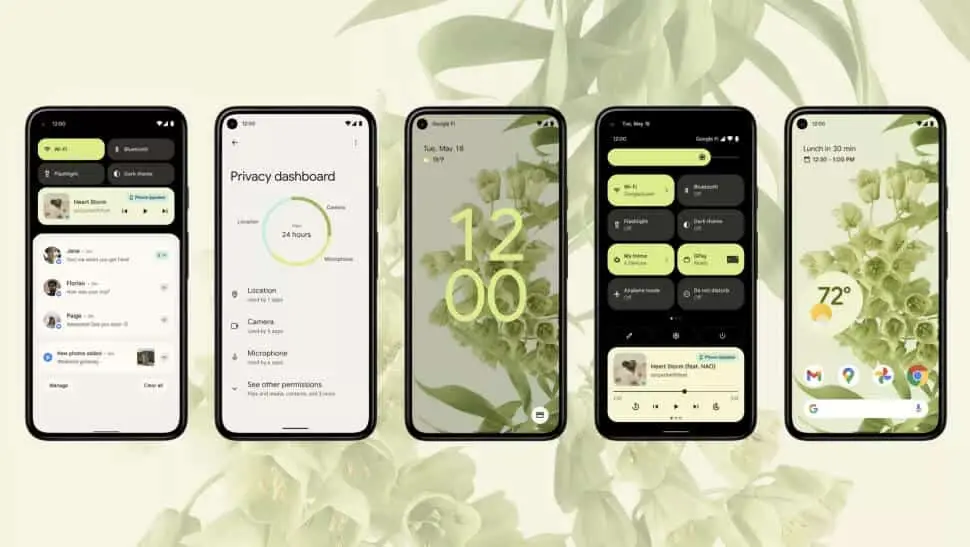
Refreshed UI
Google has declared another Material Design language for Android 12, called Material You. This is a reevaluation of the entire UI across the operating system.
The current beta brings more adjusted buttons, more varied colors, smoother motion and animations, and much more.
The company calls it color extraction, where you can pick a wallpaper and the system will naturally apply the dominant, free, and most attractive colors from it to the remainder of the UI, including the notification, conceal the lock screen, and volume controls.
Google made it a mission to ensure that Android 12 is without a doubt on the new Pixel 6 and Pixel 6 Pro phones, which include an in-screen fingerprint sensor, further developed cameras, and much more.
This time, it looks like Google has developed the phones and Android 12 couple. Bringing about a release that will show more unification than what came in past Pixel phones.
So everything is considerably more unified this time, something which Google was quick to feature. Previously, the color scheme and surprisingly the font would look mismatched, yet here, everything has been upgraded to look as unified as conceivable in Android 12.
Privacy and security
Google has made it a point this extended period of ensuring that security is at the center of Android 12. The company repeated the purpose of security is at the forefront this year, and that incorporates Android 12.
The Android Private Computer Core is the engine behind Android 12’s privacy highlights, ensuring that the apps and the phone are following the security settings enabled by you.
To start with, the new security dashboard provides you with a general perspective on apps utilizing the phone’s location, camera, contacts, and much more.
Adding to this, Android 12 will likewise ask you for permission from an app to utilize a component of the phone. You can choose to permit it while running the app, just a single time, or not at all.
You can likewise select to just give an approximate location to some apps, for example, weather apps which don’t have to know precisely where you are.
And with highlights like Live Caption, Now Playing and Smart Reply, the entirety of the audio and language processing happens on your device, so the data isn’t sent elsewhere.
There are additionally locked folders, accessible across apps, which permit you to lock a specific folder with a fingerprint.
Why is it called Android 12?
Google announced in September 2020 – by means of an Android Developers blog post – that the 2021 Android release will be called Android 12.
The point here is to make things more formal, so Google is utilizing a basic numbered approach rather than pushing the sweet treat names it utilized beforehand. Regardless, we acknowledge that Android 12 is similarly being code-named Snow Cone – the S moniker appears immediately in the status bar when it initially boots up.
Material You and other new design features
Color extraction
Color extraction is the base layer of paint in the new redesign. Fundamentally, the OS locally extracts the color from your wallpaper and utilizes them to theme your OS. On a very basic level, you set a wallpaper, Android 12 concentrates the colors, and a short time later, your OS has traces of color from it.
The color changes happen all around the OS, including the Settings, Quick Settings tiles, and any app with Material You support. On Pixel devices, models include the dialer, contacts app, and adding calculator.
Widgets
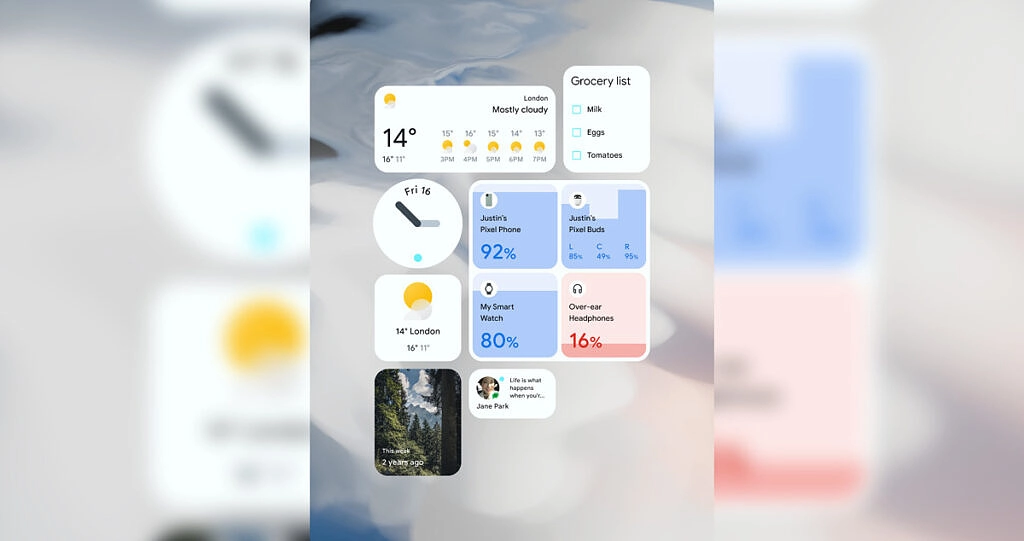
Widgets have been completely updated to offer a more customizable window and one that is intended to track down a place with the remainder of the adjusted, well-friendly interface. The conversation widget shows ongoing discussions, and Photos has a recollections widget that can surface memories from Google Photos straightforwardly on your home screen.
Quick settings shade
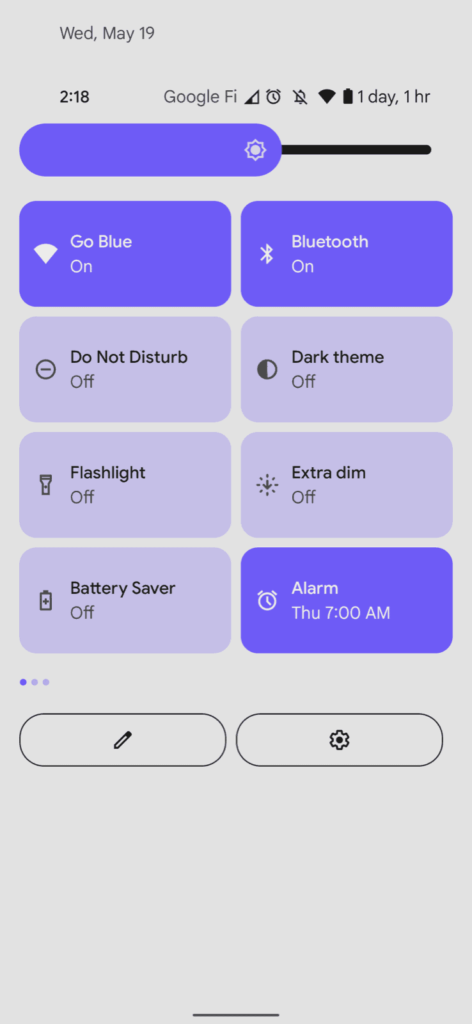
When you drop down speedy settings and notifications from the highest point of the screen you’ll presently don’t see those little round toggles. Considering everything, they’ve been replaced by a lot more prominent rectangular controls, like those we found in Android 11’s Power menu for controlling smart home devices.
What’s interesting here is the color scheme. Google has enabled the element that permits it to pick a color consequently dependent on whatever wallpaper you have, called Material You. So if your wallpaper is predominantly pink/purple, the speedy settings shade will be as well. Or on the other hand, green, if your wallpaper is green. Etc – it’s all adjustable.
Settings

The Settings menu saw a redesign, yet in addition a couple of minor changes. For the redesign, it borrows heavily from Samsung One UI with huge headers that occupy a huge load of space. It makes the top settings on some random page more straightforward to reach on taller phones. The new design, codenamed Silky Home, required ADB to access in early developer previews, however comes stock on Android 12.
The main other vital change is the addition of Safety and Emergency to the main Settings page. It allows you to characterize stuff like an emergency contact and other stuff without the need to dive into the settings further.
Notifications
Notifications have gone through something of a design redesign as well. The style of notification windows has changed, and they’re consequently grouped per app, or separated out if they’re not conversational.
Additionally, there’s a straightforward new snooze control that you essentially tap to snooze, rather than swiping on the notification. Then, at that point, you can snooze specific notifications for a set amount of time.
The best new features in Android 12
There’s an entire host of changes including a dramatic redesign of the user interface, in addition to new customization and privacy capabilities. Here is a portion of the new features in Android 12
Lock Screen Clock
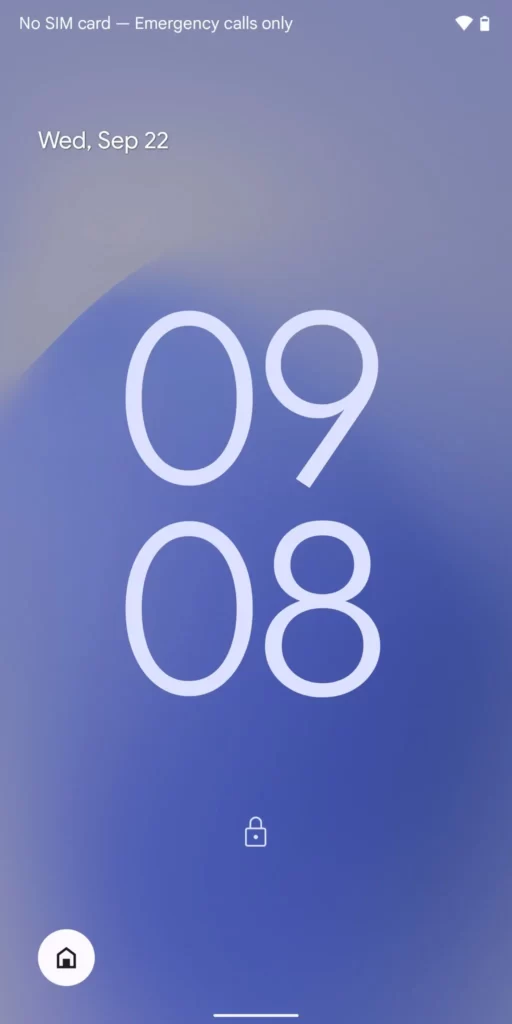
The main thing you’ll presumably see at whatever point you first time you power up a phone running Android 12 is the new lock screen clock. With your phone clear of notifications, an enormous digital clock takes up pride of spot squarely in the center of the screen.
PIN code keys
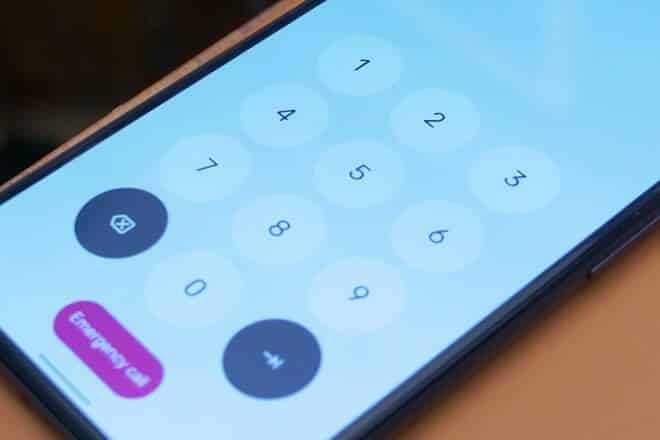
At the point when you swipe to unlock the phone, you’ll see a new design for the PIN code keypad. The ‘buttons’ are round, large, and insignificant with pastel shades. These shades are represented by Material You.
Enhanced screenshots
Take a screenshot and if the page is longer than you’ve captured, there’s the choice to capture more. Indeed, the scroll capture is in Android 12.
Head to the edit/markup capacity and you would now be able to type text onto your screenshots in various different font colors. Additionally, you can stick a few emojis on there if you need them by squeezing the little sticker symbol. You can resize them adequately too just by crushing to zoom. As a side note to that, you can now effectively dismiss screenshot thumbnails by swiping them off the screen. Simple.
Share sheet image edit
Like increasing screenshots above, when you go to share a picture file there’s a new ‘Edit’ choice that allows you to mark up pictures before sending them on. Simply raise the default share menu and tap ‘more’ where it stacks your other apps and gives you the edit choice close to Nearby Share below the image thumbnail.
Privacy dashboard
One of the major new official changes in the Privacy Dashboard. It’ll give you simple access to see what apps have gotten too specific permissions. Regardless of whether that be your camera and mic or location. Also, when you first dispatch an app and it needs access to your location you can choose to have it just gain access to an approximate location rather than exact.
Android 12 has similarly added quickly on/off flips in the speedy shade menu that disables the mic, area, and camera so that nothing can get to them. At the point when the camera or mic is being used, a little green dot will appear at the upper right of the screen. If you swipe down, you can see a full icon, and tapping on that will let you know which app is capturing pictures or sound.
Material You: Customisation and theming
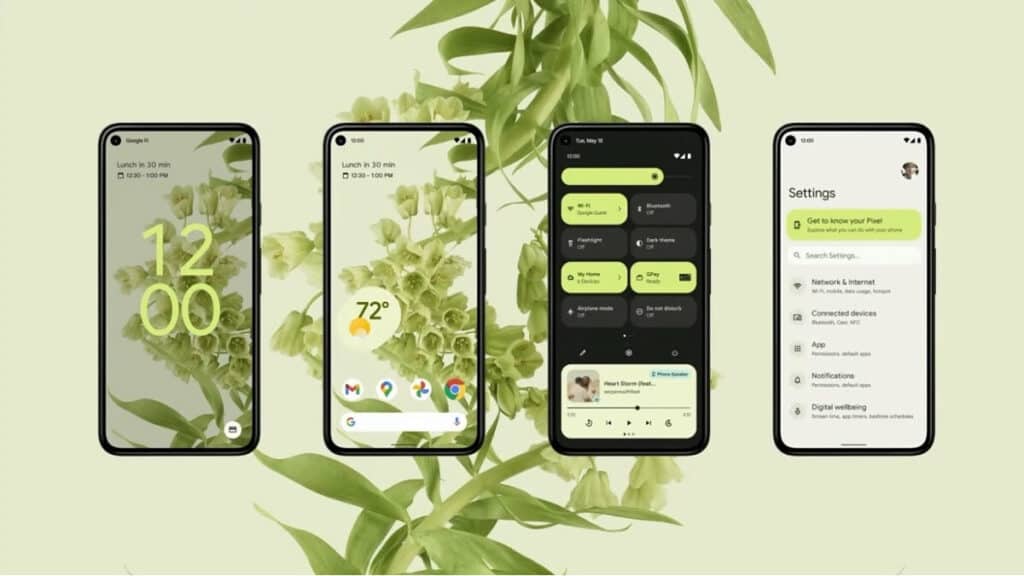
Theming is a significant part of Android 12’s new feature list. In the customization window, you can decide to have the color of your wallpaper determine the highlight and background colors of the whole phone. It additionally permits you to toggle on “themed symbols” include which transforms your app symbols to color-coordinated with ones also – although this generally just appears to work with Google apps.
The system allows you to pick a wallpaper and afterward take theme colors from the wallpaper or you can pick a “basic” complementary color all things being equal. You’ll then, at that point, track down themed colors past the home screen. It will be gotten in design elements across the phone, with some apps. Similar to the calculator or dialler getting a color makeover to fit the theme.
Media Player interface
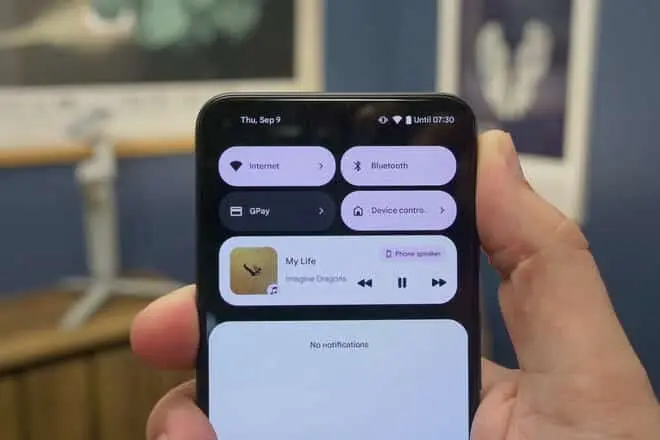
One of the more conspicuous UI changes is the updated media control widget that appears in the drop-down menu when you have music playing. Google has expanded it, making it range practically the whole width of the screen and adjusting the layout so the controls are nearer to the middle of the screen. It likewise occupies more space on the Lock Screen when active.
Presently, if you’re playing the music on your phone locally. You can tap the small symbol toward the edge of the widget and this raises another playback location popup window. Here you can adjust the music volume or immediately pair another device like a couple of earbuds or a Bluetooth speaker.
Wi-Fi sharing
The update makes it a lot simpler to share Wi-Fi passwords. In Android 12, you can share a Wi-Fi password just by heading to the Wi-Fi settings and choosing to share through a QR code. It’s exceptionally simple to utilize and works well.
One-handed mode

There’s currently another one-handed mode that you can enable. It showed up in the 2nd developer preview and could make utilizing bigger screened phones significantly simpler in the future. At the point when it’s active, you should simply drag it down from the bottom edge of the phone. And it brings the app you are seeing down halfway, to make the highest point of it simpler to reach.
New picture-in-picture controls
PiP has been around in Android for quite a while and implies you can have a little drifting video playing on-screen in any event when you are not in the video app. The new controls make it possible to develop the window without going full-screen.
Quick Tap gesture

There is a double-tap gesture for Pixel phones with Android 12.
When enabled you can give a speedy double-tap to the rear of your phone to take a screenshot. Yet you can program it to do other stuff as well. It tends to be configured for different actions. As well, as to take dispatch Google Assistant, pause/resume media playback, open the notification shade, and open the new apps view.
Control your phone with your face
Android 12 incorporates another element that permits you to control your phone with your face. Android has since a long time ago offered availability highlights. Yet Android 12 brings new camera switches, which let you control parts of the phone with facial movements.
App Search

AppSearch is a perfect new feature. It essentially allows you to look for stuff inside apps. Its been a component of other operating systems like Windows for a really long time. Essentially, the search can see within your apps and return search results from them. A model would be searching for something you wrote in a note and the search will guide you to that note without entering the app.
The component works offline and has an endless supply of potential uses. You can even search for music and the search will return results from your streaming app of decision. Google says that AppSearch should return results faster than using in-device search while moreover using fewer assets.
Improved auto-rotate
For a seriously long time, auto-rotate was picked by your phone’s accelerometer. It perceives when your phone is flipped on its side and thereafter the screen does moreover. Android 12 introduces face detection for auto-rotate. Essentially, your phone takes a look at your face and possibly rotates if it sees your phone has changed its orientation. Consequently, you can do things like lay in bed on your side, and the phone won’t rotate.
Rich content insertion
This minor however fun component is new to Android 12. It’s an API for engineers that lets their apps move media between apps. You’ll have the option to accomplish something like copying and pasting an image from one app then onto the next. It ought to likewise work with marked-up text (bold, italic, and so forth), videos, audio files, and that’s only the tip of the iceberg. It would assist cut out the middle man of sharing pictures starting with one app then onto the next.
Overview suggestions
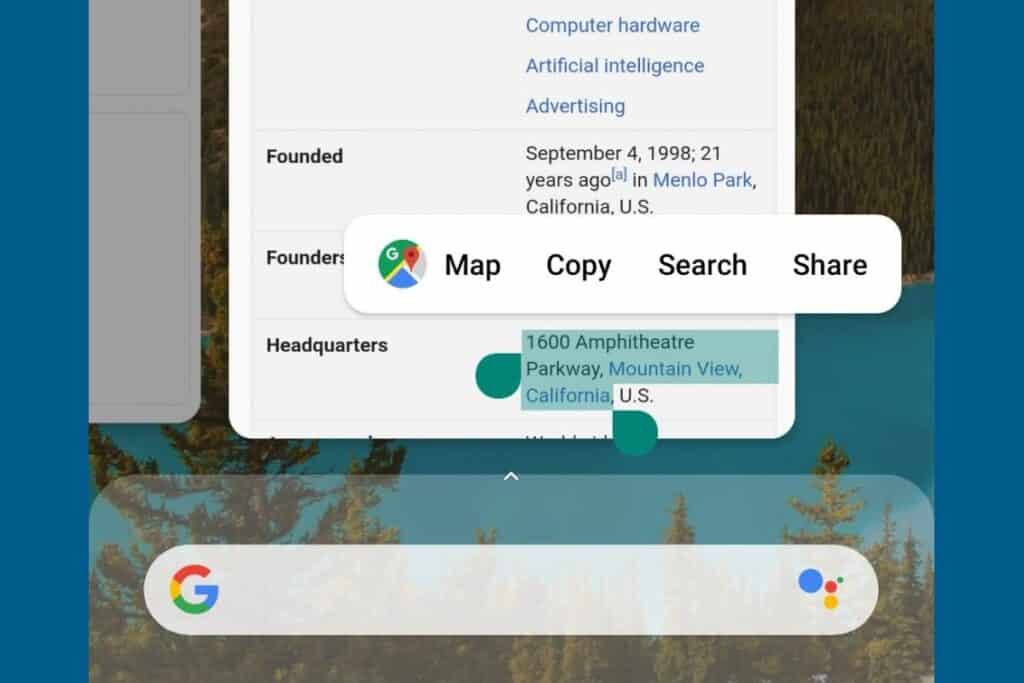
It’s been some time since the new apps section got some love from Google. This year, Google added overview ideas. At the point when you go into the new apps section, you’ll now see suggestions for things to do. For example, if you have a browser open, your new apps may recommend that you copy the link to the page you have up for more straightforward sharing.
Camera/microphone indicators

When utilizing apps that access your camera, microphone, or both all the while, a status bar indicator in the upper right of your display will currently inform when they are being accessed or utilized. This is like how iOS handles access to on-device hardware like the microphone or camera. Like iOS, the symbol will minimize to a little speck in the upper-right of your display after the initial pop-up, so you know what an app is accessing on your smartphone.
Location Sharing

Not all your Android apps need access to your exact location. Truth be told, very few apps ought to have that sort of data on you as well. Remembering this, Android 12 accompanies the new approximate location sharing element that permits you to share your approximate location to use some app functionalities. For example, you don’t require precise location pointing for a weather app; approximate location access will give you exact weather status and report without parting with your accurate latitude and longitude values.
Audio selection in the media player
The media player present in the Quick Settings allows you effectively to change your audio source. You essentially click the button and a list appears with every one of them at present connected devices. For example, you can switch from your Bluetooth speaker to your phone speaker at the press of a button.
Installing Android 12
Since Android 12 is accessible on certain devices, you can download it for yourself. You should have a viable phone, like a Pixel 3 or later. It’s really simple to download and install the new operating system. Here’s how.
- Open the Settings app
- Look down to System then hit the Advanced.
- Enter the System Update
- Your phone ought to automatically look for an update, yet you can likewise choose on Check for update
- If an update is available, you will have the option to download and install it.
It’s important to remember that Android updates regularly carry out more than a couple of days. Along these lines, if you don’t move it immediately, check about the next day.
Conclusion
Android 12 is without a doubt the greatest refresh to Google’s operating system in years. And since the official release has landed. A greater amount of you gets to take every one of the most recent and best new highlights.
With Android 12, Google is set to rip up the script a little. Absolutely changing a part of the visual parts to make it look, feel and respond differently to your onscreen signals and button presses.


